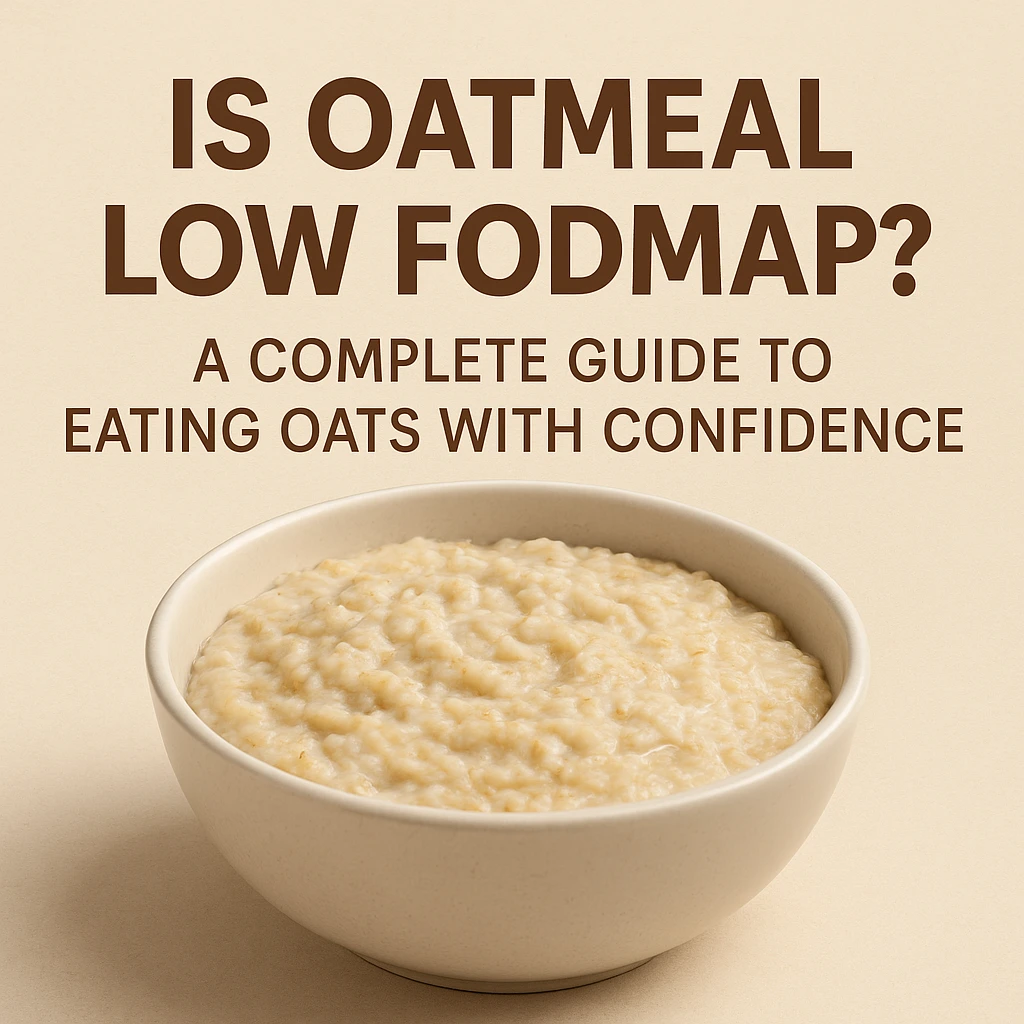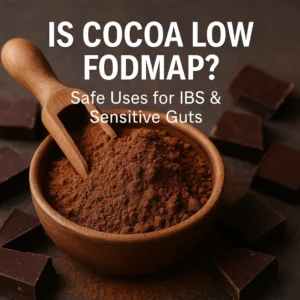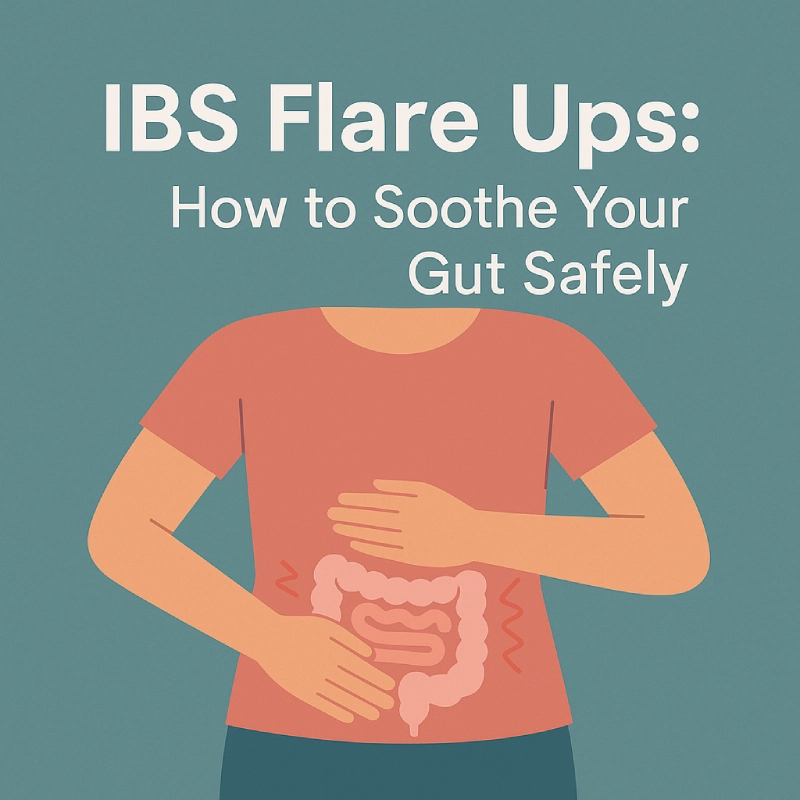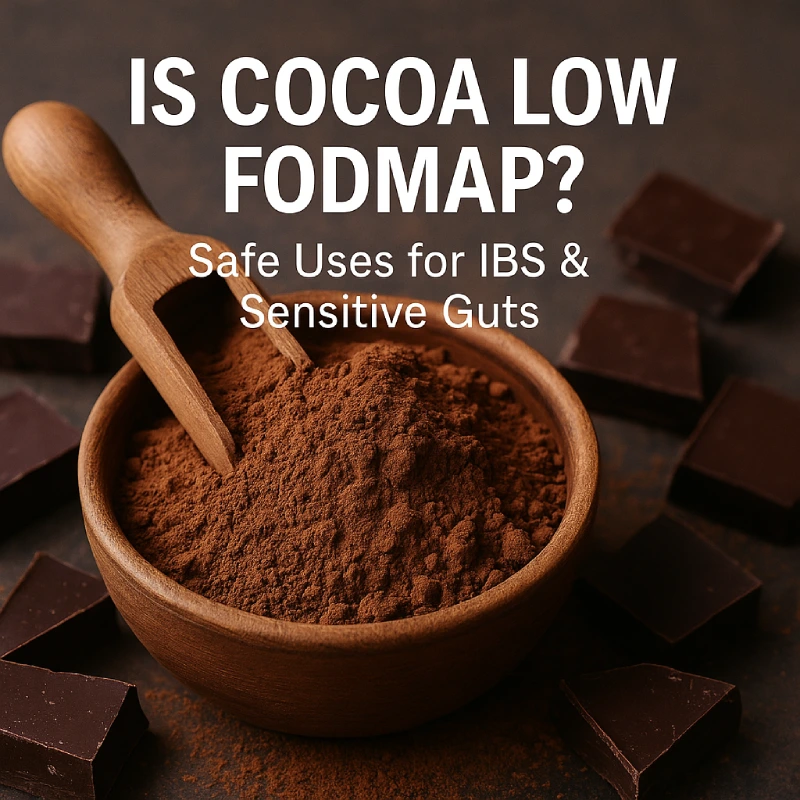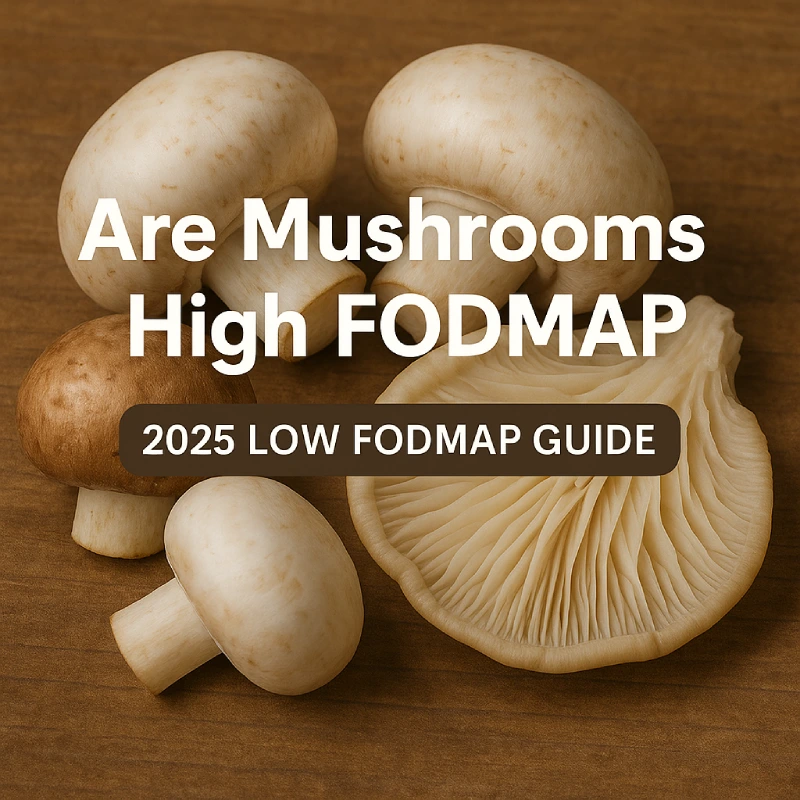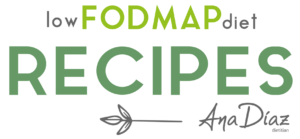Oats are a breakfast favourite for many of us; warming bowls of porridge on cold mornings, creamy overnight oats prepared the night before, or even the simple comfort of oat biscuits with a cup of tea. But if you’re following a low FODMAP diet or managing irritable bowel syndrome (IBS), you may have wondered: is oatmeal low FODMAP?
The short answer is yes, oats can fit beautifully into a low FODMAP diet. But the details matter. The type of oats you choose, the portion you eat, and the toppings you add can all make the difference between a soothing breakfast and a bloated, uncomfortable day.
In this guide, we’ll explore:
- What FODMAPs are and why they matter
- What Monash University says about oats and safe serving sizes
- How different oat products (rolled, steel-cut, instant, gluten-free) compare
- Practical tips for building a gut-friendly oatmeal bowl
- The extra health benefits oats bring beyond their FODMAP content
- Common questions people ask about oats and the low FODMAP diet
By the end, you’ll feel confident knowing exactly how to enjoy oats without compromising your digestive comfort.
Table of Contents
What Are FODMAPs & Why Portion Size Matters
FODMAPs are a group of short-chain carbohydrates found in many everyday foods. For some people, especially those with IBS, these carbs can be poorly absorbed in the small intestine. They pass into the large bowel where they ferment, creating gas and drawing in water. The result can be bloating, cramps, wind, or changes in bowel habits.
The important thing to remember is that FODMAPs aren’t inherently “bad”; they are actually prebiotic, meaning they feed beneficial gut bacteria. But in sensitive people, too much at once can overwhelm the digestive system.
That’s where portion size comes in. A small serving of a food might contain only a tiny, well-tolerated amount of FODMAPs. But double or triple the portion, and suddenly the same food could trigger symptoms. Processing methods matter too: chopping, grinding or pre-cooking food can make it easier to eat in larger amounts, which can unintentionally increase your FODMAP load.
Oats are a perfect example of this. Let’s look at what Monash University, the world leader in FODMAP research, has discovered about them.
What Does Monash University Say About Oats?
Monash University has tested different oat products in their laboratory, carefully measuring their FODMAP content. Their research shows that oats are safe to eat on a low FODMAP diet, provided you stick to recommended serving sizes.
Here’s a summary of what their findings reveal:
- Rolled oats (uncooked): Around ½ cup, or about 52 g, is considered low FODMAP. Larger portions may increase fructan levels, which can trigger symptoms in sensitive people.
- Cooked rolled oats: Preparing rolled oats with water or lactose-free milk doesn’t change their FODMAP content. A portion based on ½ cup uncooked oats remains low FODMAP.
- Quick or instant oats: Because these oats are more heavily processed, the recommended serving size is smaller. Eating more than this can quickly tip you into moderate or high FODMAP territory.
- Gluten-free rolled oats: Monash has also tested certified gluten-free oats, and these are safe in the same portion size as standard rolled oats: around ½ cup uncooked.
The message is clear: oats can absolutely be part of your low FODMAP diet, but how much you serve yourself makes all the difference.
Choosing the Right Oats for You
With so many varieties on supermarket shelves, it can be confusing to know which oats to pick. Here’s a simple breakdown:
Rolled Oats
These are the classic flat flakes many of us keep in the cupboard. They’re steamed and rolled, making them quick to cook while still holding their shape. Rolled oats are versatile, gentle on digestion in the right portion, and a reliable low FODMAP option.
Steel-Cut Oats
Also known as Irish oats, these are whole oat groats that have been chopped into pieces rather than rolled. They take longer to cook but have a nutty texture and are tolerated in similar amounts to rolled oats.
Quick or Instant Oats
These are rolled oats cut into smaller pieces, often steamed or pre-cooked, so they cook in just a few minutes. Because they’re more processed, the safe portion size is smaller. Instant oats can still be enjoyed on a low FODMAP diet, but they require more caution.
Gluten-Free Oats
Oats themselves don’t naturally contain gluten, but they’re often processed in factories that also handle wheat, rye or barley. For people with coeliac disease or severe wheat sensitivity, cross-contamination is a real concern. Certified gluten-free oats are grown and processed separately, making them the safer choice. Monash University has tested these and found them comparable to regular rolled oats in terms of FODMAP levels.
Finding Your Safe Serving
Instead of trying to memorise multiple numbers, it helps to keep a simple guideline in mind:
- Rolled or steel-cut oats: Around ½ cup (about 50–60 g uncooked) is low FODMAP.
- Quick or instant oats: Aim for 1/4 cup; a smaller serve is safer.
- Gluten-free oats: Safe at the same level as rolled oats.
Cooking or soaking oats doesn’t increase their FODMAP content, but remember that the dry weight is what Monash measures in the lab. So focus on how much you put in the pot, not how big the bowl looks once the oats have absorbed liquid.
Just as important as the oats themselves are the extras you add. A bowl of porridge made with lactose-free milk and topped with a spoonful of pumpkin seeds and a few blueberries will remain low FODMAP. The same oats topped with apple slices, honey and dried fruit could easily tip over your tolerance.
Is Oatmeal Low FODMAP for Everyone?
Even though the Monash data gives clear guidance, there’s no one-size-fits-all answer. Some people feel comfortable with the full tested portion, while others may notice symptoms with smaller amounts. Your personal response will depend on:
- Stage of the diet: During elimination, it’s best to be cautious and stick to smaller servings. Later, during reintroduction, you can test your tolerance gradually.
- Other ingredients: Milk, sweeteners or fruit can increase the FODMAP load of your meal.
- Individual sensitivity: Some people react to avenin, the protein in oats, which is unrelated to FODMAPs. If oats consistently cause discomfort even in small amounts, it’s worth seeking dietetic advice.
Practical Tips for Enjoying Oats on a Low FODMAP Diet
If you love oats, there’s no need to give them up. Here are gentle, practical strategies to include them safely:
Step-by-Step Guide
- Start plain: Begin with rolled or steel-cut oats without flavourings or added fruit.
- Measure your portion: Stick to about ½ cup uncooked rolled oats (less if using instant oats).
- Choose the right liquid: Use water, lactose-free milk, or a low FODMAP plant-based milk.
- Keep toppings simple: Try chia seeds, walnuts, pumpkin seeds, or small portions of low FODMAP fruits like blueberries, strawberries or firm bananas.
- Avoid high FODMAP add-ins: Skip apples, pears, dried fruit, inulin or chicory root fibre.
- Listen to your body: Keep a simple food and symptom diary to track how oats affect you.
- Test tolerance over time: Once elimination is complete, gradually try larger portions if you feel comfortable.
When to Be More Cautious
- If you’re still in the elimination phase of the diet
- If you have coeliac disease or severe wheat sensitivity (opt for gluten-free oats only)
- If you suspect you’re sensitive to avenin, the protein in oats
The Benefits of Oats Beyond FODMAP
It’s easy to focus only on what foods to avoid, but oats bring a wealth of health benefits that make them worth including if you can.
- Rich in fibre: Both soluble and insoluble fibre support digestion, bowel regularity and gut health. Even a low FODMAP serving of oats contributes around 5–6 g of fibre.
- Nutrient dense: Oats provide B-vitamins, iron, magnesium and antioxidants.
- Filling and satisfying: Oats release energy slowly, helping you stay full and keep blood sugar steady.
- Versatile: From porridge to overnight oats to baking, oats can adapt to many meals, keeping your diet enjoyable and flexible.
Low FODMAP Oatmeal Ideas
To inspire you, here are some gentle breakfast combinations that usually work well:
- Overnight oats: Rolled oats soaked in lactose-free milk with a spoon of chia seeds, topped with a few blueberries and chopped walnuts.
- Warming porridge: Steel-cut oats cooked with water, flavoured with cinnamon, and finished with banana slices (firm or just ripe) and a drizzle of maple syrup.
- Simple oat bowl: Rolled oats prepared with water, topped with pumpkin seeds, flaxseeds and a sprinkle of cacao powder.
What the Research Still Needs to Clarify
Even though Monash University has given us solid guidance, there are still questions researchers are exploring:
- Why some people react at smaller servings than the lab tests suggest.
- How different oat varieties and growing regions might affect FODMAP levels.
- The long-term impact of oats on gut microbiota and IBS management beyond the reintroduction phase.
As more data emerges, recommendations may evolve, but for now the tested portion sizes provide a safe and practical framework.
At a Glance: Low FODMAP Oats & Toppings
| Oat Type | Low FODMAP Serving | Notes |
|---|---|---|
| Rolled oats | ½ cup uncooked (≈ 52 g) | Safe and versatile. Great for porridge or overnight oats. |
| Steel-cut oats | ½ cup uncooked (≈ 50–60 g) | Takes longer to cook; similar tolerance to rolled oats. |
| Instant / quick oats | 1/4 cup uncooked (≈ 23g) | More processed, so keep the serve smaller. Avoid flavoured or sweetened packets. |
| Gluten-free oats | ½ cup uncooked (≈ 52 g) | Best choice if you have coeliac disease or wheat sensitivity. |
Safe Toppings (Low FODMAP Portions)
- Fruit: Strawberries (5 medium), blueberries (≤ 40 g), raspberries (≤ 30 g), firm banana (≤ 100 g)
- Seeds: Chia seeds (≤ 2 tbsp), pumpkin seeds (≤ 2 tbsp), flaxseeds (≤ 1 tbsp)
- Nuts: Walnuts (≤ 10 halves), pecans (≤ 10 halves), macadamias (≤ 20 nuts)
- Sweeteners: Pure maple syrup (1 tbsp), small drizzle of rice malt syrup, 1 chopped medjool date
- Flavourings: Cinnamon, cacao powder, vanilla extract
Exta Tips
- Measure dry oats before cooking or soaking.
- Use water, lactose-free milk, or tested low FODMAP plant milks.
- Keep toppings simple and within safe portion sizes.
- If symptoms appear, reduce the portion and try again later.
FAQs About Oatmeal And The Low FODMAP Diet
Is oatmeal always low FODMAP?
Not always. Oatmeal can be low FODMAP if prepared with plain rolled or steel-cut oats in moderate portion sizes. But instant oats, large servings, or toppings like apples and honey can push it into the high FODMAP range.
How much rolled oats is considered low FODMAP?
Monash University suggests that about ½ cup of uncooked rolled oats (around 52 g) is a safe serving. This is the equivalent of a standard bowl of porridge once cooked with water or lactose-free milk.
Can I eat instant oats on a low FODMAP diet?
Yes, but you’ll need to be more cautious. Instant oats are more processed, so the tolerated serving size is smaller (aim for 1/4 cup). Check labels carefully, as flavoured or sweetened packets often contain high FODMAP ingredients.
Do I need gluten-free oats?
If you have coeliac disease or a strong wheat sensitivity, certified gluten-free oats are the safest option to avoid cross-contamination. For others, regular oats are fine from a FODMAP perspective.
What about oat milk; is it low FODMAP?
Oat milk can be tricky. Many commercial oat milks are high FODMAP at a typical serving size because they contain more oats than a bowl of porridge. Always check Monash University’s latest data for tested brands and portion sizes.
Can I eat oats every day on a low FODMAP diet?
Yes, if you tolerate them well. Sticking to the safe portion size and varying your toppings can make oats a nourishing daily breakfast option. If you notice symptoms, scale back and re-test later.
Final Thoughts
So, is oatmeal low FODMAP? The answer is: yes; when eaten in the right way. Oats are not only safe in moderate portions but also highly nutritious, offering fibre, vitamins, minerals and lasting energy. By choosing the right type of oats, measuring your serving carefully, and adding gut-friendly toppings, you can enjoy the comfort of oatmeal without the discomfort of IBS symptoms.
Remember: the low FODMAP diet isn’t about restriction forever; it’s about learning what works for you. Oats are a wonderful example of how a simple food can be adapted to support both nourishment and digestive comfort.

